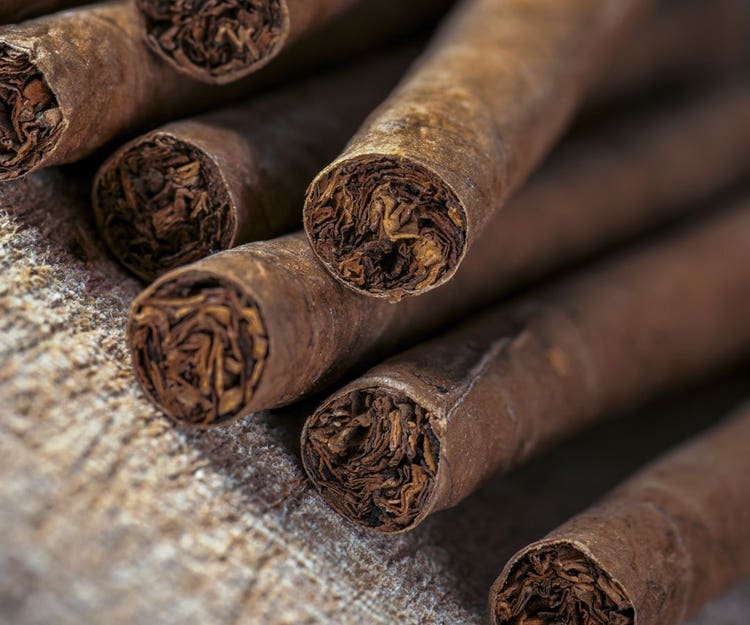
How to grow tobacco for rolling your own cigars
“I am passionate about not killing our soils and promoting sustainable agriculture,” writes French in his Introduction. “I have seen firsthand the effects of pesticide exposure. From studying organic chemistry at Auburn University to holding a large-scale commercial pesticide license for many years, I can tell you there are classes of chemicals that really are dangerous to be around (much less smoke).”
Ray French is also among the most highly-respected agriculturists by the national farming community. He is responsible for introducing such new plants at the popular Knock Out® Rose, the Encore® Azalea, and the SunPatiens® variety of impatiens.
How To Grow Your Own Tobacco covers the entire process of growing tobacco organically. From the very basics of growing (including a history of tobacco), to grades and varieties of tobacco, to organic growing, to controlling tobacco diseases and pests, right through to harvesting, drying and curing. There’s even a section on how to roll your own cigarettes and cigars. All of this information is presented in a clear, straight-forward, and easy-to-follow text for the layman farmer or gardener. Moreover, there are plenty of photos and drawings illustrating every step of the organic tobacco growing process in every chapter.
Suffice it to say, if you’ve ever entertained the idea of organically growing your own tobacco, or other plants, for that matter, How To Grow Your Own Tobacco is “the bible.”
An Interview with Ray French
By Lola Honeybone | MEDIAworkshop (Nashville, TN)
Describe a leaf reserved for the cigar wrapper. You mentioned it has to be perfect.
Ray French: A cigar grade leaf has to be harvested when ripe with no puncture wounds or holes from insects or handling. The best will tend to come from the upper part of the plants – and are usually the healthiest in terms of color. To put it frankly – they’re the best looking leaves on the plant. Thin veins are also a desirable characteristic.
After the drying and curing process is complete, you will select the best leaves to be used as wrappers. Again, these are leaves without holes. Another standout characteristic: these leaves have flexibility. Once you identify leaves that will make wrappers, store them a little on the moist side. Professional cigar makers store in a special sealed tin to maintain flexibility right up until they are needed.
Lizard Tail Oronoco: Did you grow it? How does it compare to other types? Why does it make the best cigars?
R.F.: Yes I did grow it. It has a longer and narrower leaf than other varieties. One noticeable difference – the leaf was much thicker than any other type I grew. It is known for producing strong flavors. I actually blend with other types.
Describe your control standards during the drying and curing process (cigar grade).
R.F.: During the initial drying process I tried to harvest leaves when they were ready, but the window of opportunity may only be a few days. So, watch closely! Remember – throughout the drying process keep the environment dry enough to turn the leaves yellow within a few days. If the environment is too humid, the leaves will mildew. I used several drying methods, but draped over an indoor clothesline was the easiest.
Another note: do not let the leaves dry all the way to powder. Moisten them carefully by either increasing the humidity or misting them a bit with distilled water. Once they are flexible you can then pack them flat and apply pressure, or store them hanging in a fairly humid environment.
What is your easiest curing recommendation (cigar grade)?
R.F.: Depending on the quantity, either in a vacuum sealed bag or in bales wrapped in burlap and bound under pressure.
What types of tobacco make the best cigar grade?
In my opinion, the Virginia Gold and Havana Gold both made nice cigars as filler, binder, and wrapper.
Break down your do’s and don’ts in growing cigar grade tobacco.
R.F.: Do a good job preparing the soil. Do check on your crop every day. Don’t keep it so wet it mildews.
How does it differ from cigarette tobacco?
R.F.: Typically the left over pieces and bits of scrap can be shredded further and turned into cigarettes. The cigar grade tobacco leaves are always the highest quality harvested, dried, cured and stored correctly. If I let some get too dry or did not moisten correctly to handle, I would toss to the cigarette stash.
* * *
So, will cigar smokers opt for growing their own tobacco over buying cigars produced in Central America? Of course not. Can you imagine trying to create a cigar like a Padrón or an Arturo Fuente by yourself? We’re talking generations of experts with their own secret formulas. Perhaps with the right seeds, soil, growing conditions, etc., you’ll come up with your own “recipe.” After all, anything’s possible.